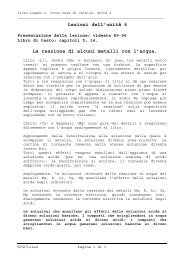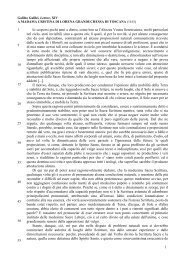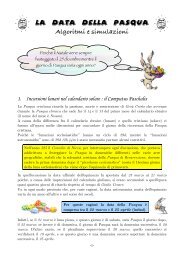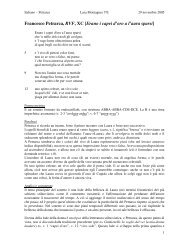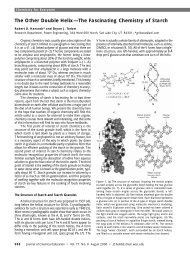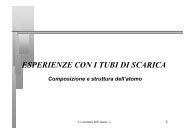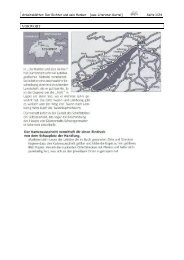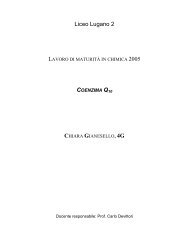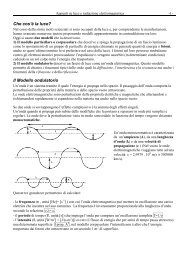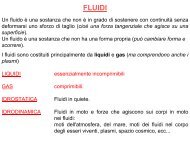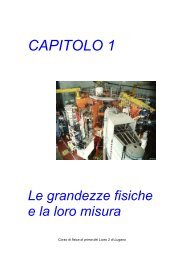6.5 REDUCTION- OXIDATION POTENTIAL (ELECTRODE METHOD)
6.5 REDUCTION- OXIDATION POTENTIAL (ELECTRODE METHOD)
6.5 REDUCTION- OXIDATION POTENTIAL (ELECTRODE METHOD)
You also want an ePaper? Increase the reach of your titles
YUMPU automatically turns print PDFs into web optimized ePapers that Google loves.
18 — REDOX<strong>6.5</strong>.3.BINTERPRETATIONA rigorous quantitative interpretation of a measurement of Ehrequires interactive access to an aqueous speciation code. Exercisecaution when interpreting a measured Eh using the Nernstequation. The Nernst equation for the simple half-cell reaction(M I (aq) = MII (aq) + e− ) isEh = E o + 2.303RT/nF log (a II M(aq) / aI M(aq) )where:R = gas constant;T = temperature, in degrees kelvin;n = number of electrons in the half-cell reaction;F = Faraday constant; anda I and M(aq) aII = thermodynamic activities of the free ions M(aq) MI (aq)and M II and not simply the analytical concentrationsof total M in oxidation states I and II,(aq)respectively.Measurements of Eh are used to test and evaluate geochemicalspeciation models, particularly for suboxic and anoxic groundwatersystems. Eh data can be useful for gaining insights on theevolution of water chemistry and for estimating the equilibriumbehavior of multivalent elements relative to pH for an aqueoussystem. Eh can delineate qualitatively strong redox gradients; forexample, those found in stratified lakes and rivers with an anaerobiczone, in an oxidized surface flow that becomes anaerobic afterpassing through stagnant organic-rich systems, and in minedrainagedischarges.Reduction-Oxidation Potential (Electrode Method) U.S. Geological Survey TWRI Book 9 4/98



